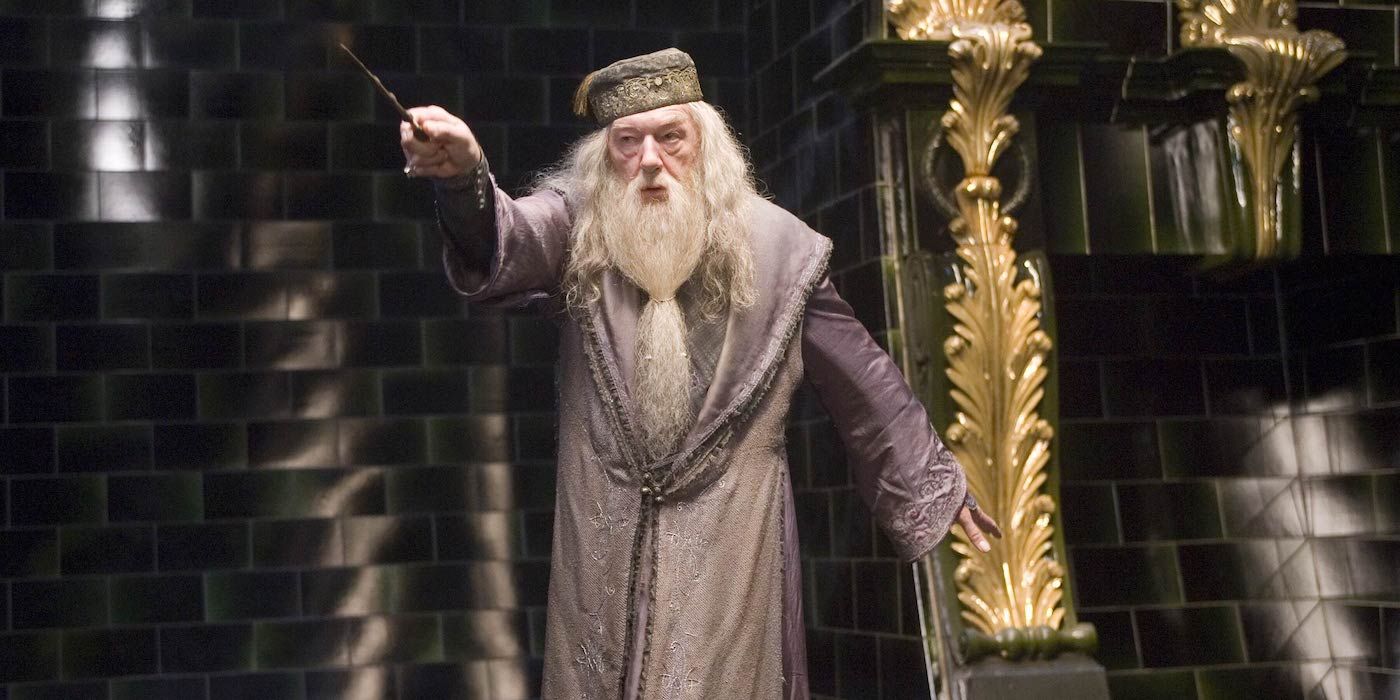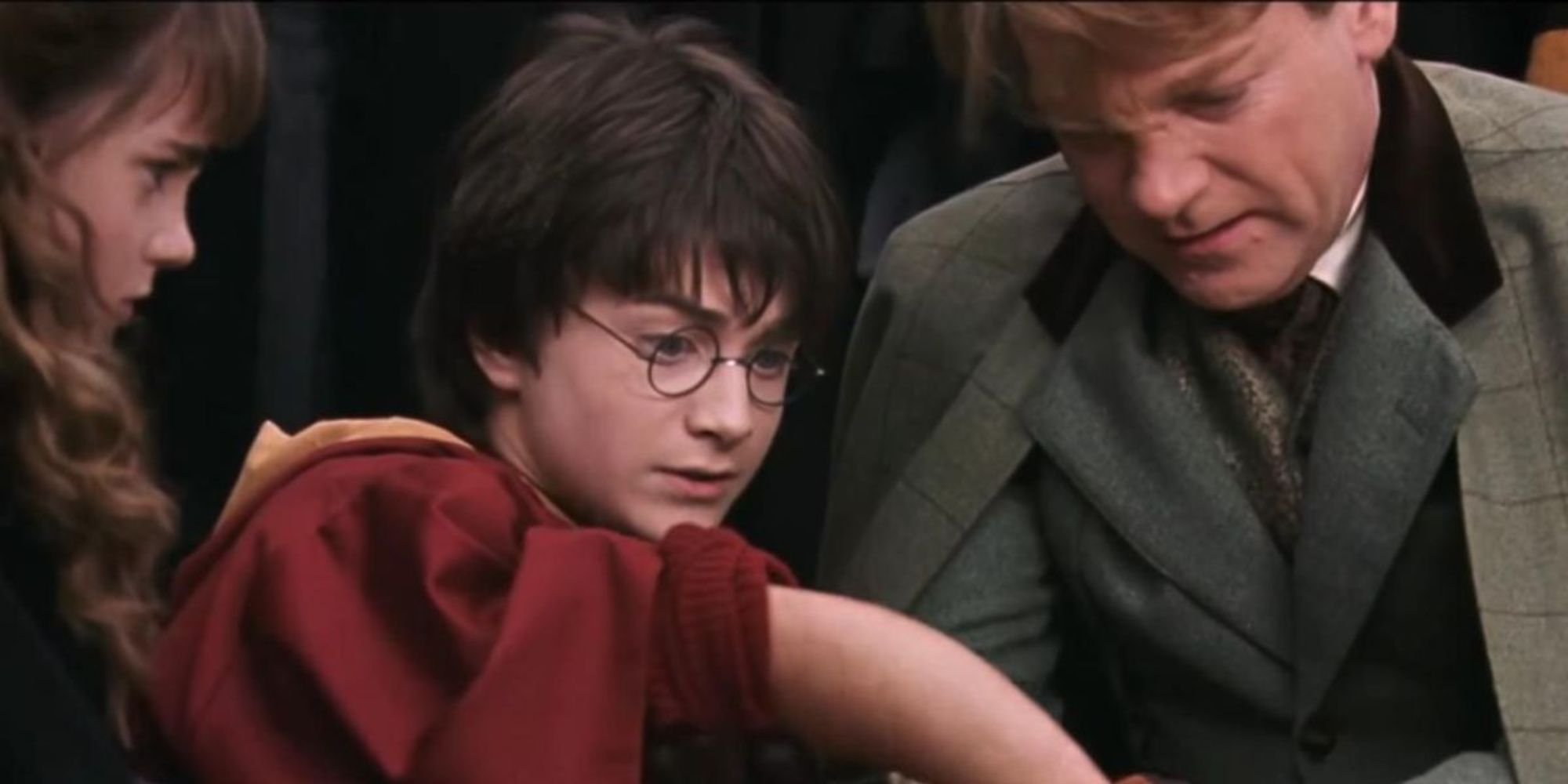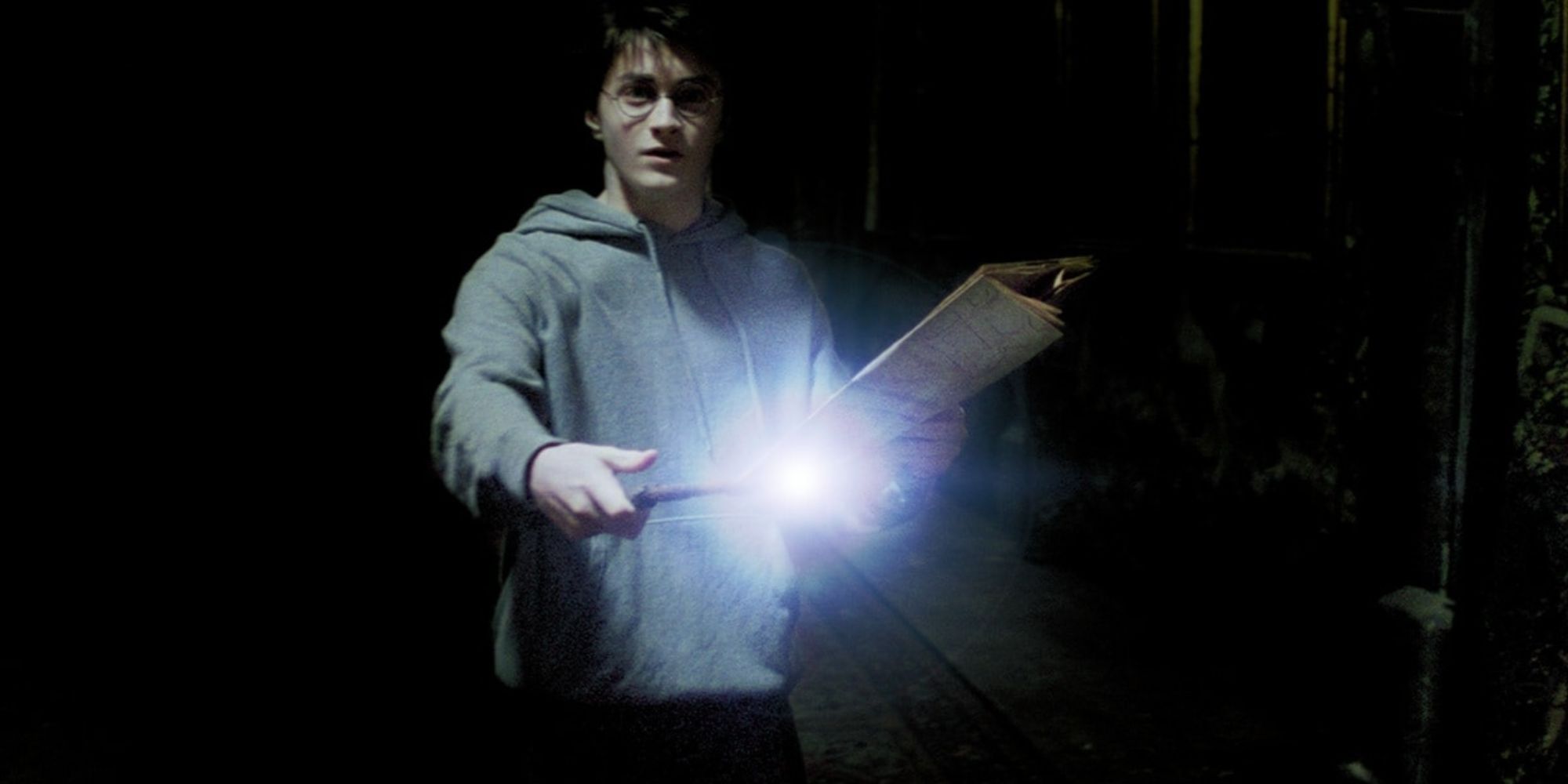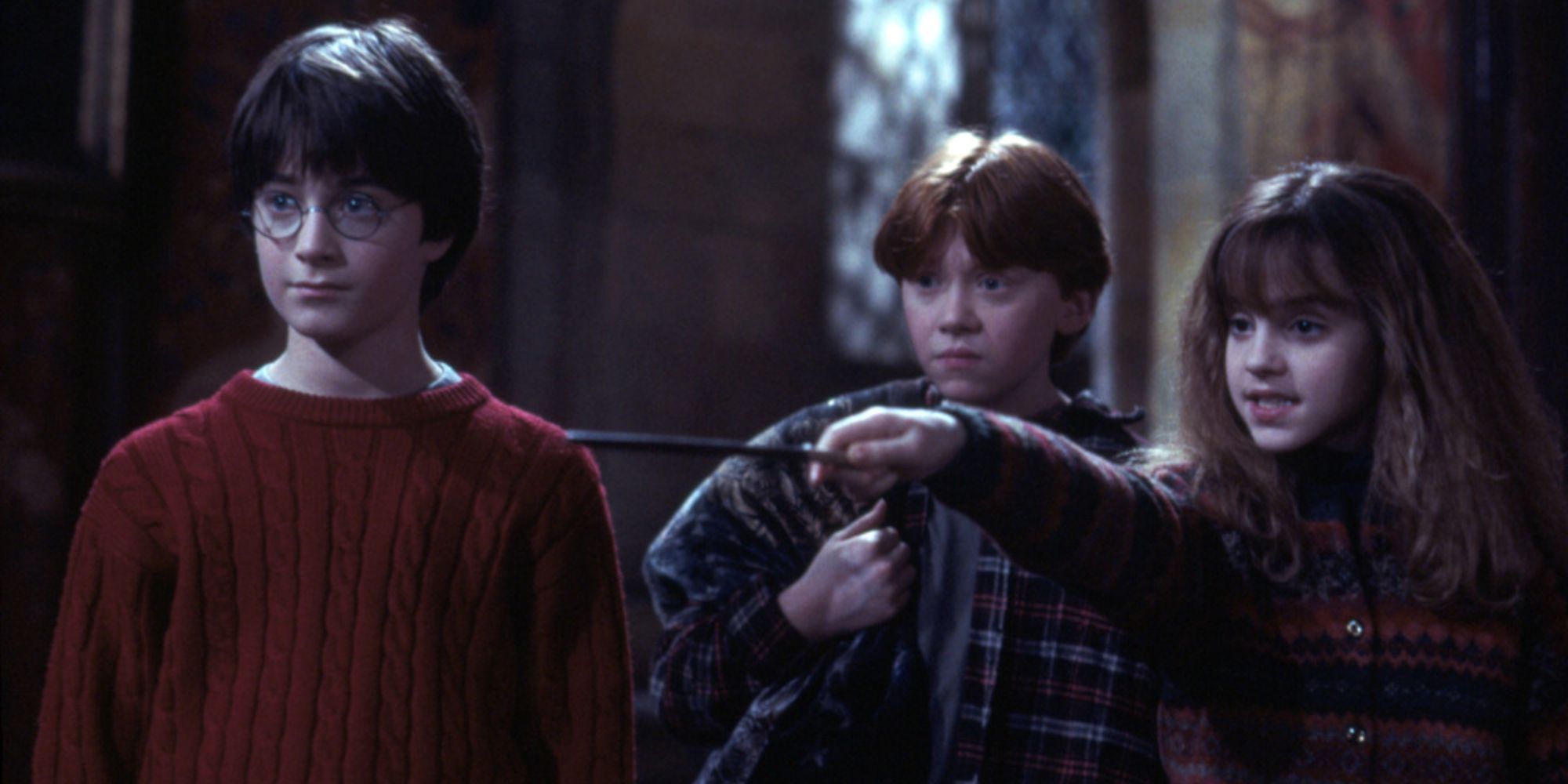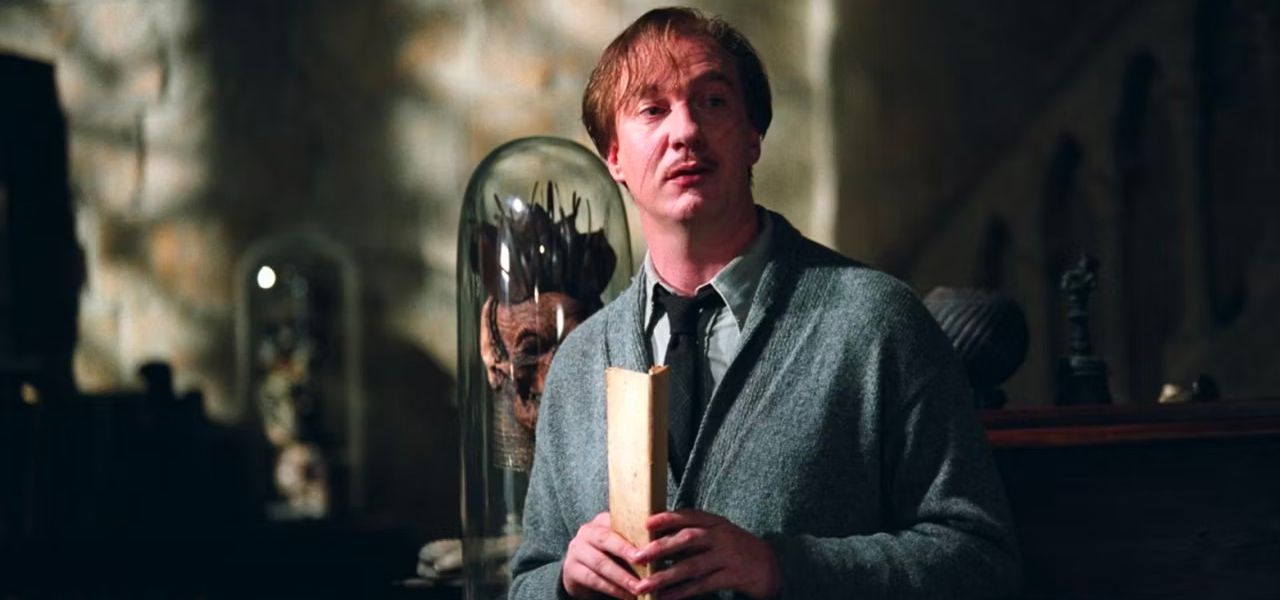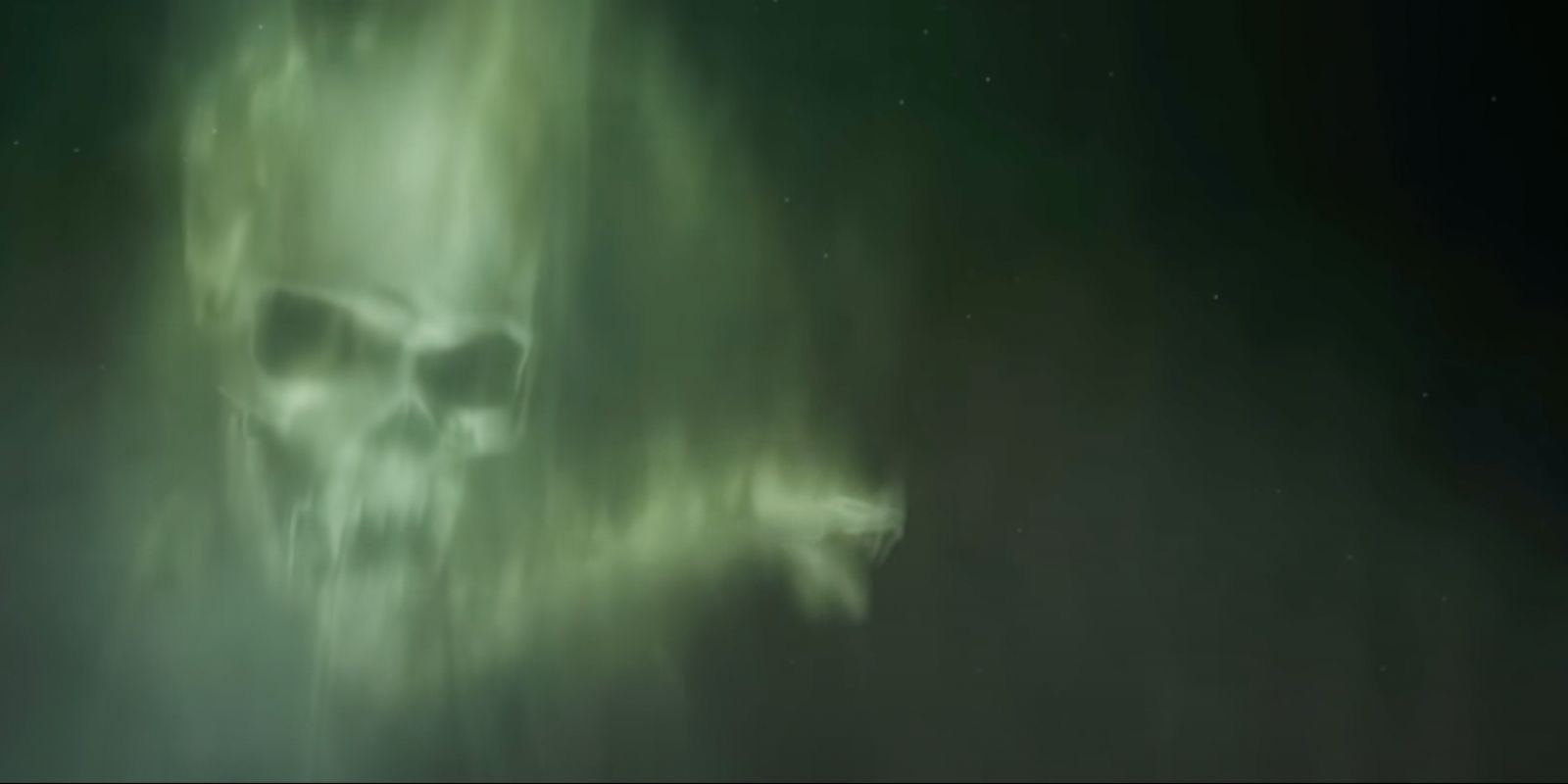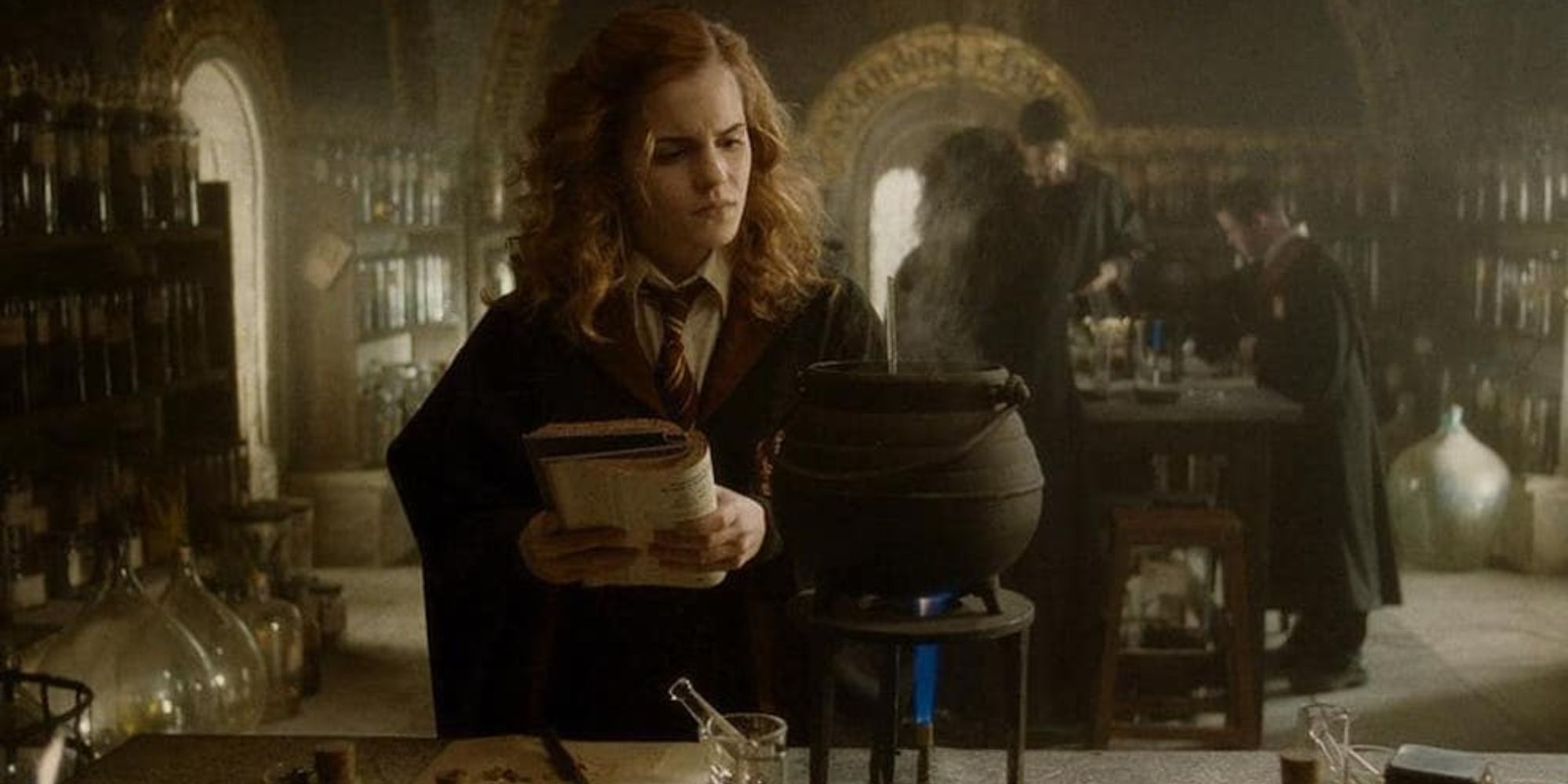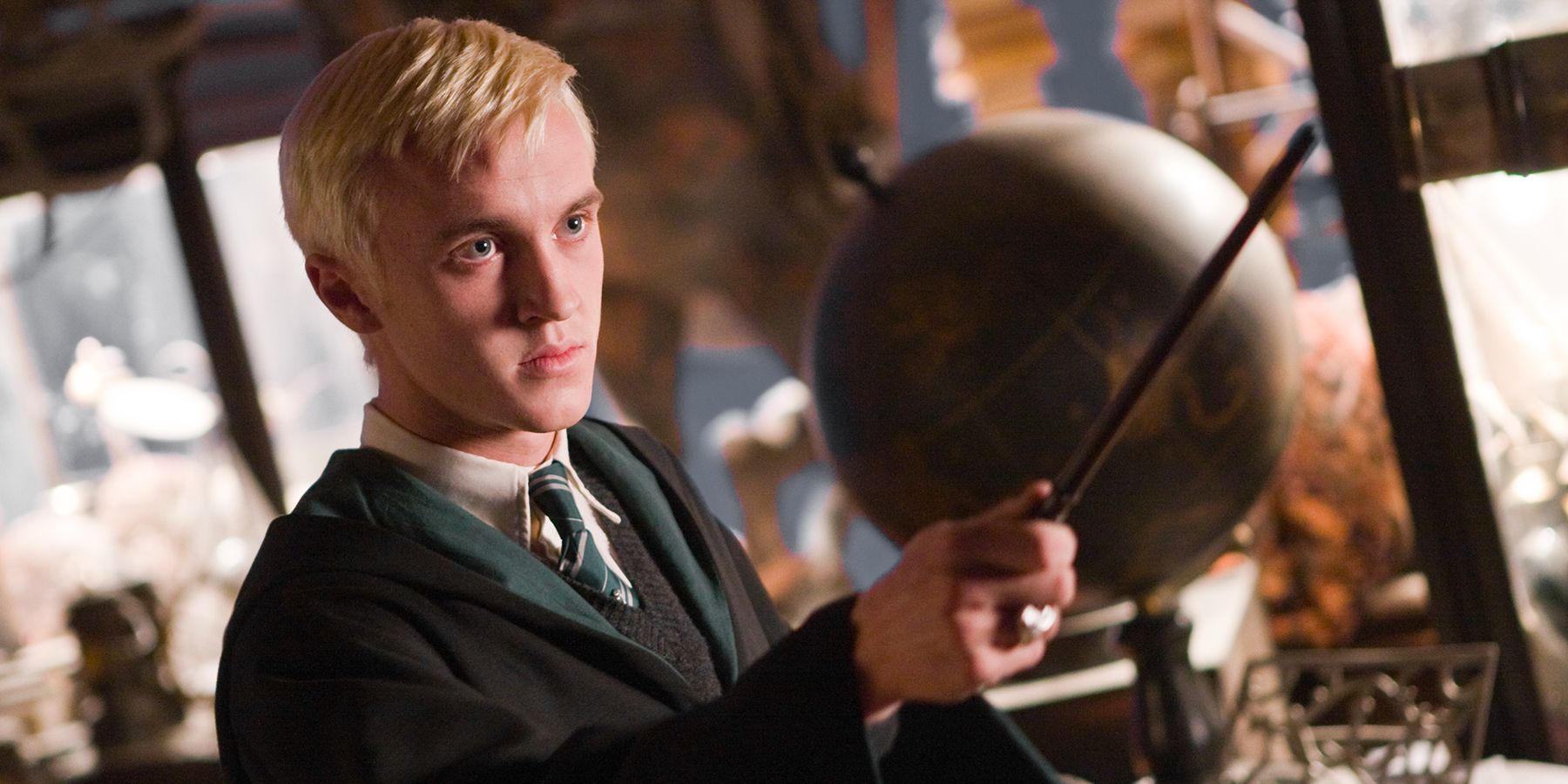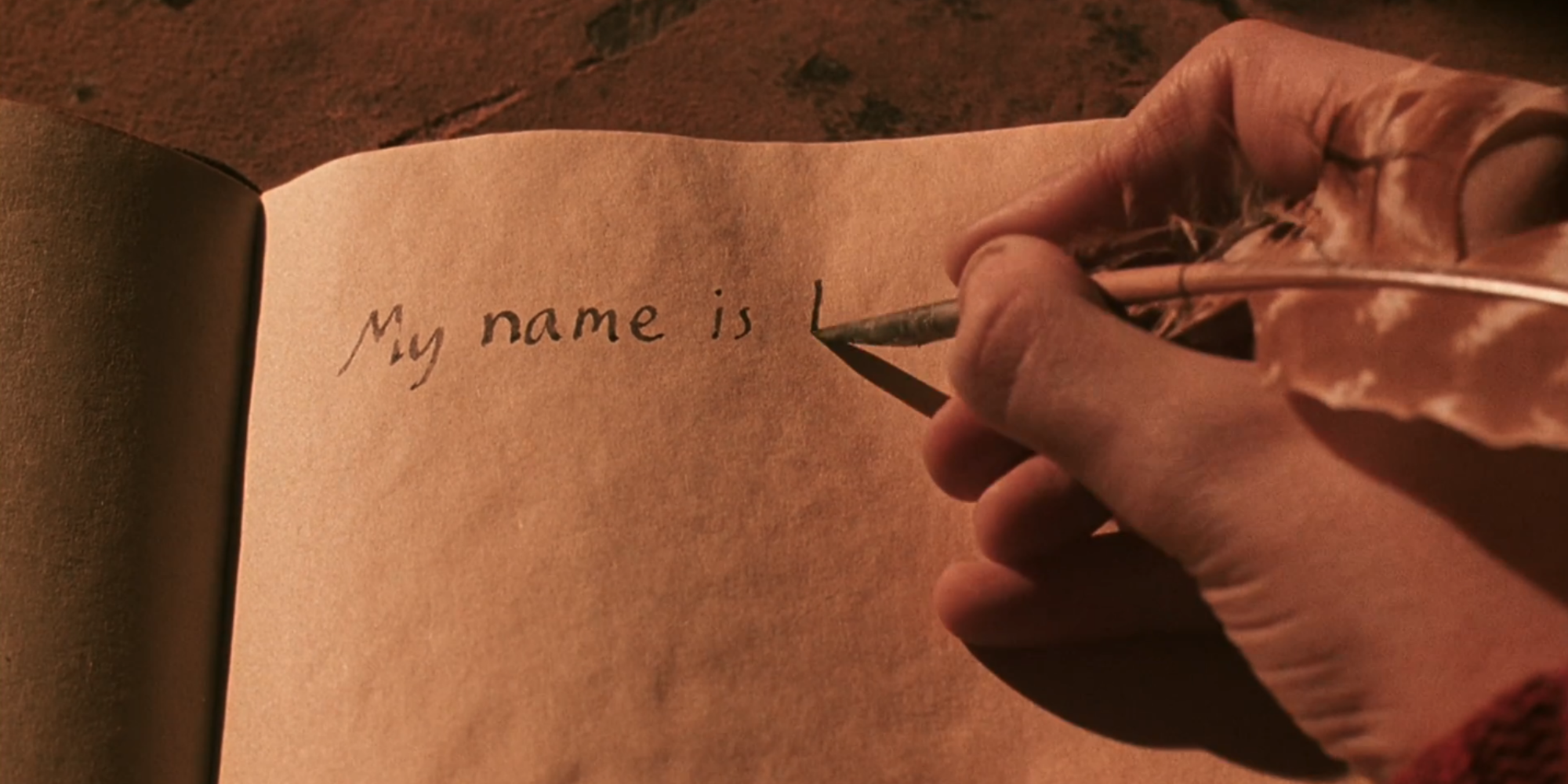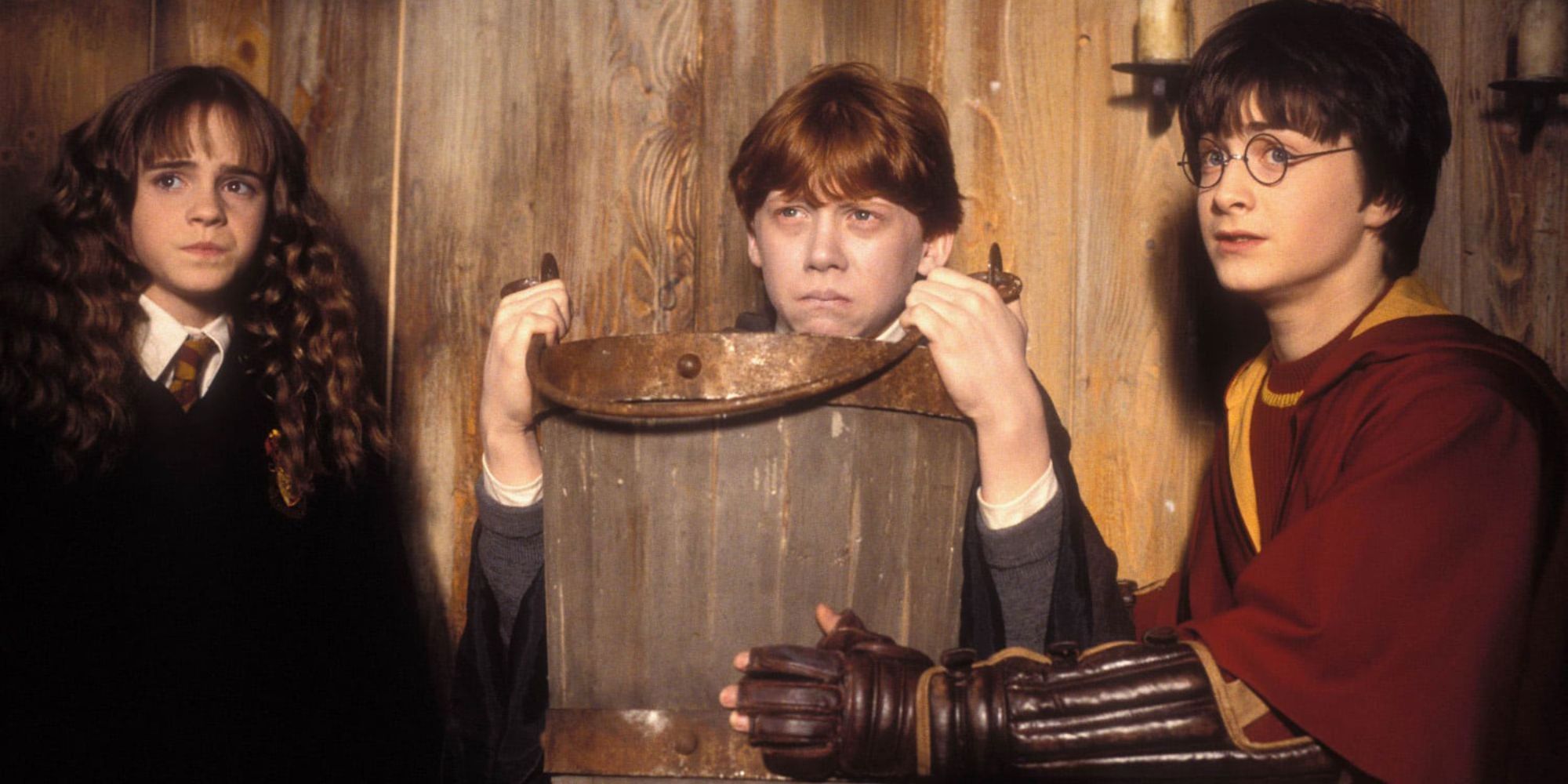As one of the most incredibly immersive and captivating fictional universes ever created, the Wizarding World of the Harry Potter franchise boasts many wondrous and imaginative things that make it both mesmerizing and unique, however, it also has some oddities embedded within it as well. One of the major sources of many of these quirky ideas is the vast array of spells that appear in the films, novels, and games, spells which include slug-vomiting curses, tooth-growing hexes, and projectile jinxes.
Some of these spells have absolutely no use whatsoever beyond sheer juvenile amusement, while others may have once been convenient but have been made redundant in the modern world. Straying from practicality, these spells don't necessarily invigorate the Wizarding World with the sense of fantastical appeal that charms like Wingardium Leviosa or Expelliarmus do, but they still exist - for some unknown reason - in the Harry Potter saga nonetheless.
10 Brackium Emendo
The Healing Spell
When it comes to useless spells (and the even less useful wizards who cast them), few would deny that Gilderoy Lockhart (Kenneth Branagh) is something of an unfortunate poster boy. The bumbling Defense Against the Dark Arts professor teaches Harry and his friends throughout their second year at Hogwarts, a year when Harry’s schooling experience is marred by Dobby’s (Toby Jones) well-intentioned yet disastrous attempts to discourage him from finishing the term.
One of the house elf’s more hare-brained efforts to achieve this involves bewitching a bludger to target Harry during a quidditch match, a ploy which unsurprisingly ends with Potter nursing a broken arm. Before Harry is even seen to by Madame Pomfrey (Gemma Jones), Lockhart takes it upon himself to save the day, casting a spell that leaves Potter’s forearm boneless. While the desired healing effect would be convenient, a spell that can inadvertently debone someone is far from reliable or useful.
Harry Potter and the Chamber of Secrets
- Release Date
- November 13, 2002
- Director
- Chris Columbus
- Cast
- Daniel Radcliffe , Rupert Grint , Emma Watson , Richard Griffiths , Fiona Shaw , Harry Melling
- Runtime
- 161
9 Lumos/Nox
The Wand-Lighting Charm
A two-for-one spell, Lumos and Nox are used prolifically throughout the Harry Potter universe as they see the spellcaster’s wand function as a light source. The incantation “Lumos” will see light flow from the tip of the wand, while “Nox” will make said light disappear. While it is great to use when sneaking around the castle at night, it comes with its pitfalls which can be easily overcome with other, non-magical devices.
The biggest flaw with the spell is the fact that the caster needs to verbally say the incantation, which makes creeping secretly around the school grounds all the more difficult when unexpectedly beset upon by a roaming teacher on watch. As Harry Potter is set in the 90s, Harry is entitled to the benefit of the doubt that flashlights weren’t readily available to him on a smartphone, but it doesn’t change the fact that this spell had a penchant for getting him into trouble in one way or another.
Harry Potter and the Prisoner of Azkaban
- Release Date
- May 31, 2004
- Director
- Alfonso Cuarón
- Cast
- Daniel Radcliffe , Richard Griffiths , Pam Ferris , Fiona Shaw , Harry Melling , Adrian Rawlins
- Runtime
- 141
8 Locomotor Wibbly
The Jelly-Legs Curse
An obvious candidate not only for one of the most inconsequential spells in Harry Potter, but the most ridiculous sounding as well, Locomotor Wibbly has been mentioned several times in the wider Harry Potter lore, but it never made it into the films. A relatively harmless curse, it turned the victim’s legs to jelly to incapacitate them temporarily.
Admittedly, the spell does have some logical usefulness with its debilitating though harmless effect, but a similar result can be gained by casting Petrificus Totalus or Stupefy, and neither of those necessitates the sorcerer to say “wibbly.” The curse could be quite nasty, though still relatively inconsequential when used in conjunction with the Pimple Jinx curse, in which case little tentacles would sprout over the victim’s face. In the novel Harry Potter and the Goblet of Fire, this happens to Crabbe when Harry and George Weasley attack him with the two spells.
Harry Potter and the Goblet of Fire
- Release Date
- November 16, 2005
- Director
- Mike Newell
- Cast
- Eric Sykes , Timothy Spall , David Tennant , Daniel Radcliffe , Emma Watson , Rupert Grint
- Runtime
- 154 minutes
7 Waddiwasi
The Projectile Jinx
An effective spell for perpetual pranksters and mild menaces, Waddiwasi was the wizarding equivalent of the pea shooter or the rubber band slingshot. The Projectile Jinx, as it is also known, can be used to propel something small – like a piece of gum, scrunched-up paper, or a spitball – across a room at high speeds.
While it may not be surprising that the spell doesn’t appear in the Wizarding World very often, one thing that may be a little shocking is that it isn’t perennial jokers Fred and George Weasley that use it, but Professor Lupin (David Thewlis). In the novel Harry Potter and the Prisoner of Azkaban, the teacher casts the spell to dislodge a piece of gum from a door lock and send it flying straight at Hogwarts’ resident poltergeist, Peeves.
6 Morsmordre
The Dark-Mark Charm
As a spell used exclusively by the Death Eaters, Morsmordre has an undeniable aura about it, rolling off the tongue with devilish ease to be instantly impactful, but otherwise was quite limited. All style and no substance, the spell fires a glowing shot which erupts into a massive, ominous skull being rounded by a vicious snake that protrudes from its mouth.
The most notable use of the spell thus far came in Harry Potter and the Goblet of Fire, following the Death Eaters’ attack on the Quidditch World Cup, when Barty Crouch Jr. (David Tenant) marched across the rubble before casting the spell into the night sky. It was a shocking and striking moment, one which revealed that Voldemort’s followers were growing bolder, but, beyond some symbolic flair, the spell itself was ineffective.
5 Mobiliarbus
The Wood-Moving Charm
Obscure, overly specific, and ultimately redundant, Mobiliarbus presented the powerful wizard Hermione (Emma Watson) with ample opportunity to showcase her magical nous, but did little else that Wingardium Leviosa would have been incapable of. Derived from the Latin words "mobilis" (to move) and "arbor" (tree), the charm would grant the spellcaster the ability to raise wooden targets a few inches off the ground and move them around at will.
It was used by Hermione in the Three Broomsticks during Harry Potter and the Prisoner of Azkaban when she needed to hide Harry from Professor McGonagall (Maggie Smith) and used a Christmas tree as cover for her friend. It was convenient in those very precise and unique circumstances, but the fact that it was limited solely to wooden targets made it largely futile.
4 Densaugeo
The Tooth-Growing Hex
Another mean-spirited but ultimately ineffective spell, Densaugeo was a hex which would cause the victim’s front teeth to grow at an alarmingly rapid rate. It appeared in the novel Harry Potter and the Goblet of Fire when Malfoy (Tom Felton) cast the spell, hitting Hermione whose front teeth extended until they were well over a foot long, something that rattled the witch who was already conscious of her buckteeth and sent her to Madame Pomfrey to amend the situation.
While it has obvious appeal to line-crossing pranksters and malevolent schoolyard bullies, it represents yet another spell in the Wizarding World which has little to no practical use. While its effects were instantaneous and could be humiliating, Densaugeo wasn’t debilitating or remotely lethal, and it could be cured with Reducio, the Shrinking charm.
3 Aparecium
The Revealing Charm
In case you haven’t noticed yet, the Harry Potter franchise is rife with spells that serve such niche purposes that it is quite astounding that they were ever conceived in the first place. A prime example of this is Aparecium, which, as a revealing charm, is somewhat useful in theory, especially when characters are scouring old texts and personal diaries for hidden writings of the utmost importance.
The issue is that the spell, in addition to being used only for such a specific purpose, doesn’t necessarily always work as well as the caster would like. Hermione first used it in Harry Potter and the Chamber of Secrets on Tom Riddle’s diary, but it was unsuccessful. Additionally, it is implied that fan-favorite character Professor Snape (Alan Rickman) used it in Harry Potter and the Prisoner of Azkaban on the Marauder’s Map.
2 Point me
The Navigational Charm
Whereas so many magic spells in the Harry Potter universe have wondrous and majestic incantations, this particular charm runs with a simple English pronunciation. The most likely reason for this, which is loosely implied in the books, is that the spell may actually be Hermione’s invention as she gave it to Harry to help him in the Triwizard Tournament, which is the only recorded use of the spell in Harry Potter lore.
The spell’s purpose is to function as a compass, with the caster holding the wand flat on their palm as it points due north. It became an asset to Harry when he was caught in the dangerous hedge maze during the third task of the Triwizard Tournament, though he did use it a number of times throughout the novel. Sadly, while it may have been handy in the '90s, the spell would be largely redundant in the modern age of GPS.
1 Slugulus Eructo
The Slug-Vomiting Charm
The formal incantation for Ron’s (Rupert Grint) “Eat Slugs!” spell, which he attempted to use against Draco Malfoy in retaliation to him calling Hermione a “mudblood”, Slugulus Eructo is as unpleasant as it is useless. Quite aptly referred to as the Slug-vomiting Charm, it forced its victim to endure an uncomfortable period of time when they would hurl up slugs.
Given Ron’s wand was broken and being held together by sticky tape when he cast it, it is perhaps no surprise that it backfired on him so terribly, and while he was in a miserable state for some time in beloved Hogwarts Professor Hagrid's (Robbie Coltrane) hut, the spell caused no harmful or lasting effects. It could be handy in a prank war, and everyone would have loved to have seen Malfoy on the receiving end of Ron’s spell, but it was ultimately impractical.

